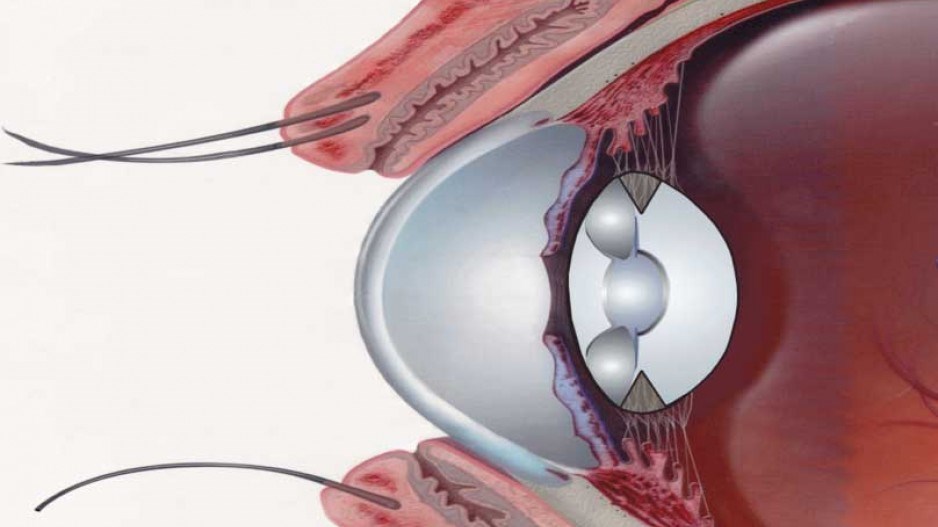A White Rock optometrist has developed a “bionic lens” that he claims can be implanted in cataract patients and also adapted for cameras to create images that more closely replicate human vision.
Garth Webb, founder of iSYS Adaptive Optics Inc, unveiled his adaptive lens technology at the Life Sciences Innovation NorthWest conference last week in Seattle.
The lens uses a liquid-filled membrane and a parasol-shaped structure that would compress and change shape with the contractions and dilations of the eye’s ciliary body. The change in curvature of the lens would focus the eye on different distances, according to the patent Webb has filed.
“The patient would be able to focus from infinity right up to within three-inch distance, just like when they were four years old,” Webb told Business in Vancouver.
Webb added it could also be used as an alternative to laser surgery, and the recipients would not need reading glasses as they got older.
Webb’s bionic lens is still in design phase and no clinical trials have been done. It has not yet been approved or endorsed by the optometry industry.
In addition to its medical applications in humans, Webb said his bionic lens may also have applications in cameras. A still or video camera using an iSYS Adaptive lens would use one lens, like a traditional camera, but would have two apertures to replicate binary vision.
“The ability to have a lens change curvature in an optically cohesive fashion is as big news for the camera-computer industry as it is for the eye-care industry,” Webb said. “It allows for us to engage all of the optical properties of the human eye into a camera, and as a result of that, we can literally duplicate the exact human experience.
“Those two lenses would allow you to have a 180-degree field of view with stereo vision.”




